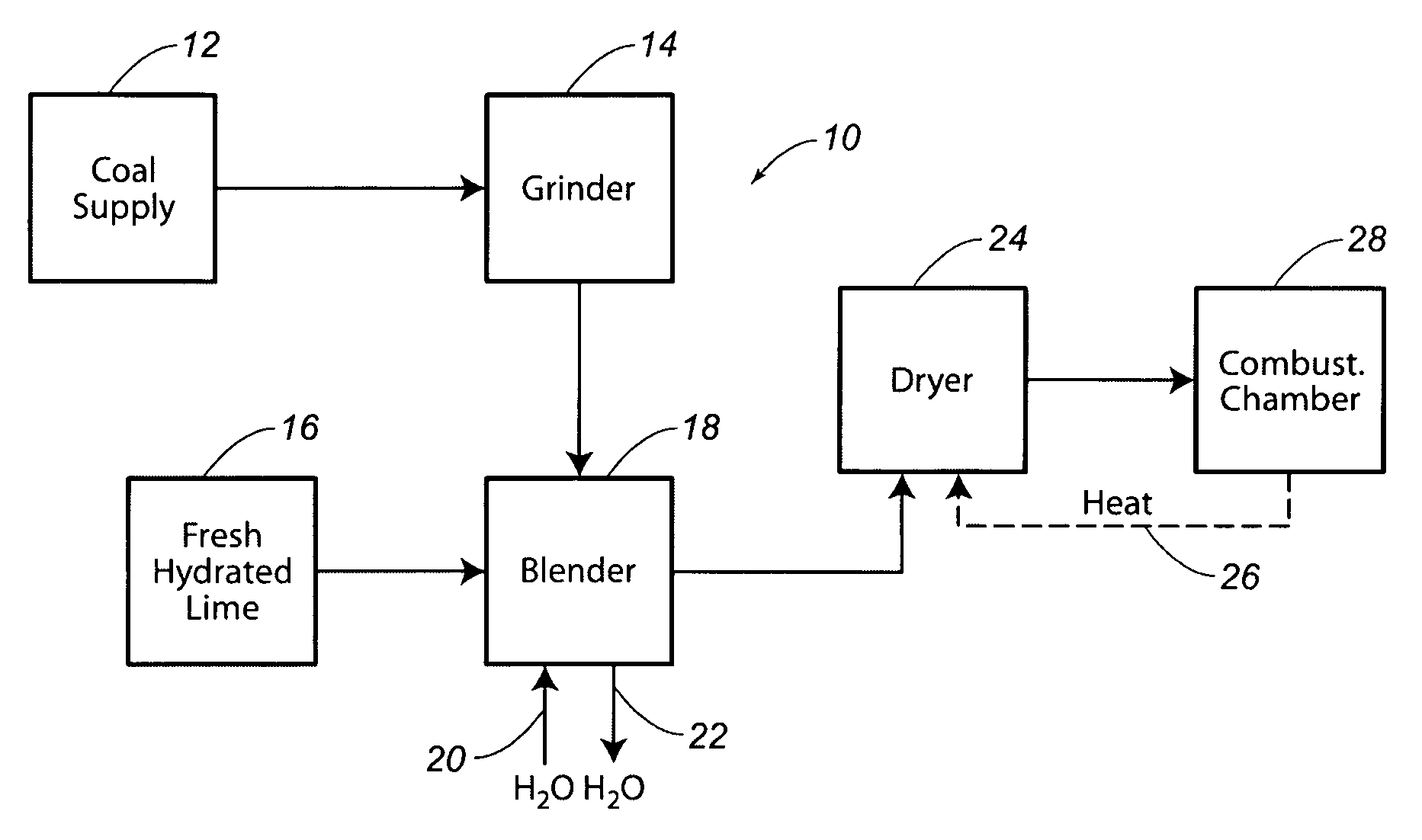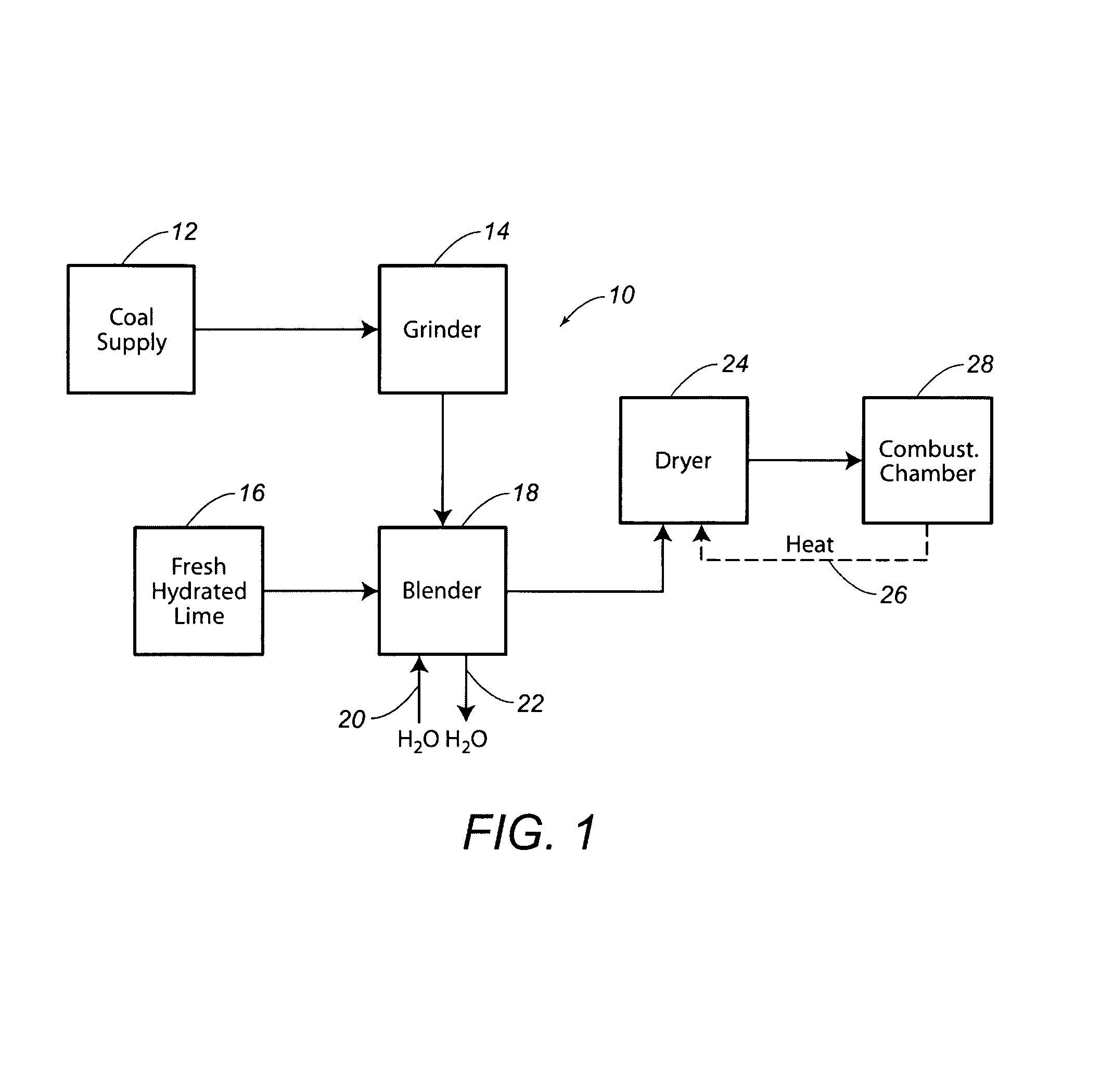Process for modifying coal so as to reduce sulfur emissions
a technology of sulfur emissions and furnace modifications, applied in the direction of solid fuels, fuel additives, petroleum industry, etc., can solve the problems of high cost of procedure, low sulfur coal cannot be burned without operational difficulties, high capital costs of furnace modifications, etc., and achieve the effect of reducing sulfur emissions
- Summary
- Abstract
- Description
- Claims
- Application Information
AI Technical Summary
Benefits of technology
Problems solved by technology
Method used
Image
Examples
Embodiment Construction
[0016]Referring to FIG. 1, there is shown at 10 a schematic representation of the process of the present invention. In the present invention, a coal supply 12 is available for the delivery of coal to a grinder 14. The coal supply 12 can be of a high-sulfur coal. The grinder receives the high-sulfur coal from coal supply 12 and serves to grind the coal so as to reduce the size of the coal particles to an average sieve size in the range of between 20 meshes (850×10−6m or 850 m) and 80 meshes (180×10−6m or 180 m). The preferred size of the coal particles will be an average of 40 meshes (425×10−6m or 425 m).
[0017]Initially, a supply 16 of fresh hydrated lime [Ca(OH)2] is provided in powder form. The actual powder form of the fresh hydrated lime in the supply 16 is of a size which is less than 10% of the size of the coal particles from the grinder 14. The fresh hydrated lime will pass to a blender 18 along with the coal particles from the grinder 14. The fine particles of coal from the g...
PUM
| Property | Measurement | Unit |
|---|---|---|
| temperature | aaaaa | aaaaa |
| temperature | aaaaa | aaaaa |
| size | aaaaa | aaaaa |
Abstract
Description
Claims
Application Information
 Login to View More
Login to View More - R&D
- Intellectual Property
- Life Sciences
- Materials
- Tech Scout
- Unparalleled Data Quality
- Higher Quality Content
- 60% Fewer Hallucinations
Browse by: Latest US Patents, China's latest patents, Technical Efficacy Thesaurus, Application Domain, Technology Topic, Popular Technical Reports.
© 2025 PatSnap. All rights reserved.Legal|Privacy policy|Modern Slavery Act Transparency Statement|Sitemap|About US| Contact US: help@patsnap.com


